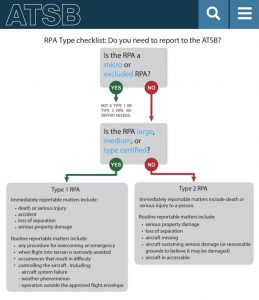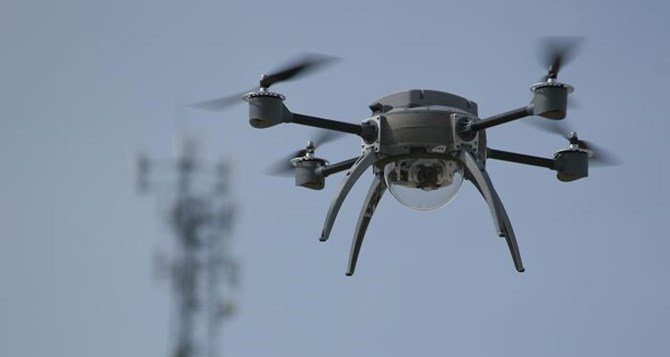The Australian Transport Safety Bureau has released a summary of the new drone incident reporting requirements which take effect on 30 September 2021, explained in the decision tree below. The new reporting requirements will help the bureau to assess safety issues and monitor trends in the operation of remotely piloted aircraft (or drones).

The new Transport Safety Investigation Regulations 2021 will repeal and replace the Transport Safety Investigation Regulations 2003. These new regulations will continue to require the reporting of certain transport safety occurrences to the ATSB as immediately or routine reportable matters. The main changes to these regulations will be the introduction of updated requirements for operators of certain types of remotely piloted aircraft (RPA) to make reports to the ATSB.
“RPAs are an emerging form of commercial aviation that will benefit from investigation into systemic safety issues to help prevent future accidents,” said ATSB Chief Commissioner Angus Mitchell. “The recognition of transport safety issues associated with the operation of RPAs, will be a welcome development, and provide greater certainty for commercial operators and enthusiasts alike. For the ATSB, it’s an exciting opportunity to apply our world-leading aviation safety investigation capabilities, and improve safety outcomes in a growing field.”
Recognising the range of different types of RPA and their uses, the regulations will categorise relevant RPA as type 1 or type 2 RPA. RPAs that have been certified against relevant airworthiness standards (type certification), large (greater than 150kg) and medium RPAs (more than 25kg but not more than 150kg) are defined as type 1 and are an emerging form of commercial aviation that will benefit from investigation into systemic safety issues to help prevent future accidents.
In contrast, type 2 RPA are defined as those RPA that are not type 1, excluded or micro RPA (gross weight of not more than 250 grams) and will have fewer reporting requirements. This distinction is made on the basis that ATSB investigations are unlikely for these operations unless there is serious risk of harm to people or significant third-party property.
RPAs that are not type 1 or type 2 including excluded or micro RPA will have no reporting requirements under these regulations.
Mandatory reporting for certain occurrences involving type 1 and type 2 RPA (see below) will allow the ATSB to properly measure, investigate and report on safety trends in the RPA sector.
Making a report to the ATSB is not a time-consuming process, and the ATSB investigates incidents from a ‘no-blame’ perspective, prioritising improved safety outcomes.
Who is affected?
In order to provide an efficient and effective safety framework, the new regulations define two types of RPAs which will be subject to specific reporting requirements.
Type 1 RPAs are those which are type certified, large (over 150 kg) or medium (25 kg to 150 kg) RPA.
Type 2 RPAs are those that are not Type 1, and are not an excluded or micro (under 250 g) RPA.
Under the revised requirements, Type 1 operators will be required to immediately report to the ATSB RPA occurrences involving:
- death or serious injury;
- accidents;
- loss of a separation standard with aircraft; and,
- serious damage to property.
Less serious incidents and occurrences are required to be reported to the ATSB within 72 hours
Occurrences involving Type 2 RPAs will generally only need to be immediately report to the ATSB if they involve death or serious injury, while less serious incidents and damage to the RPA will need to be reported within 72 hours.
For more information visit:




